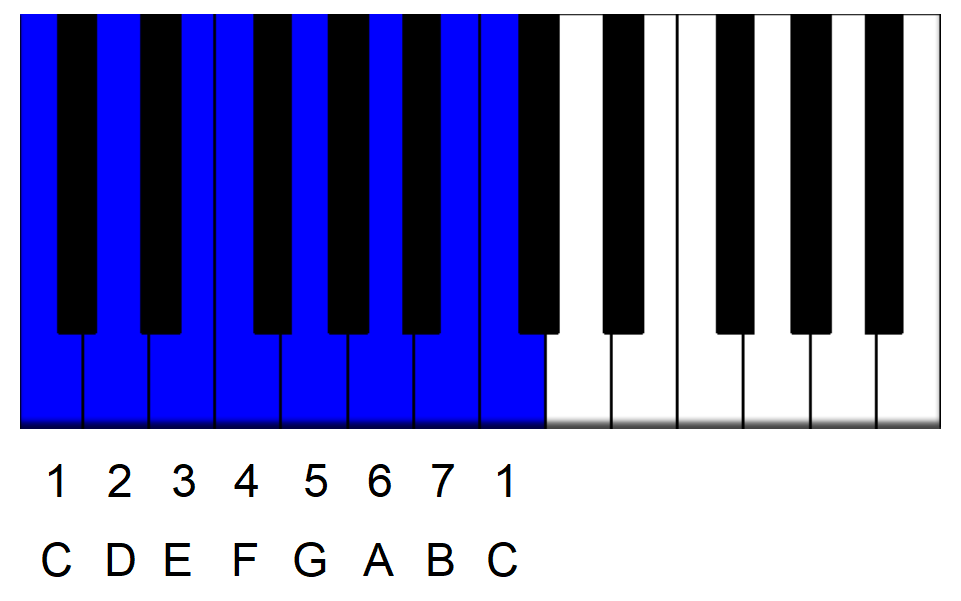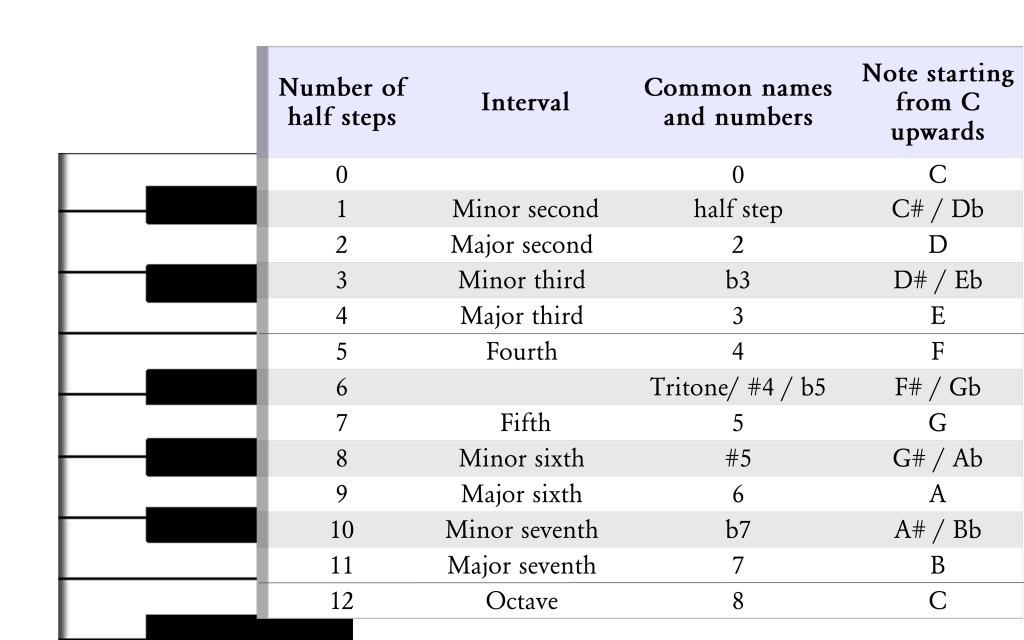– This article is an exerpt from the Playing Piano with Chords book. –
To understand chords you will need a little bit of theory, but we’ll try to keep it as simple as possible. Don’t worry if you don’t understand all of it at this point – you will come back to the necessary parts when you need them.
It all starts with a major scale consisting of 7 notes.


It repeats after the seventh note B, starting on C again.
The C major scale is easy enough to memorize, because it consists of only the white keys of the piano. After the seventh note all notes repeat them-selves, but now one octave (octavus meaning eighth in Latin ) higher.
The fingering for the C major scale is 5-4-3-2-1-3-2-1 with the third finger crossing over the thumb for the left hand, and 1-2-3-1-2-3-4-5 with the thumb crossing under the third finger for the left hand.
The distance between two notes of the scale is called an interval and is measured in half steps. All major scales have the following formula:
whole step (two half steps), whole step, half step, whole step, whole step, whole step, half step. You can create all major scale using this formula but starting on different root notes.

Here is a complete list of the intervals within one octave (the distance of eight notes or 12 half steps). If you turn the table 90 degrees, you will note that the C major scale is represented by the white keys, and the remaining notes represent the black keys.

The interval from C to D is a major second, consisting of two half steps.
The interval from C to E a major third, consisting of four half steps.
The interval from C to F a fourth, consisting of five half steps.
The interval from C to B is a major seventh, consisting of 11 half steps.
You can also find a minor third, a minor seventh and so on, which are a half step down from the major third or major seventh. For C major these would be E♭ and B♭, but they are not part of the major scale.
A sharp fourth or sharp fifth would be a half step up from the fourth or fifth. For C major these would be F♯ and G♯ , not being part of the major scale as well.

